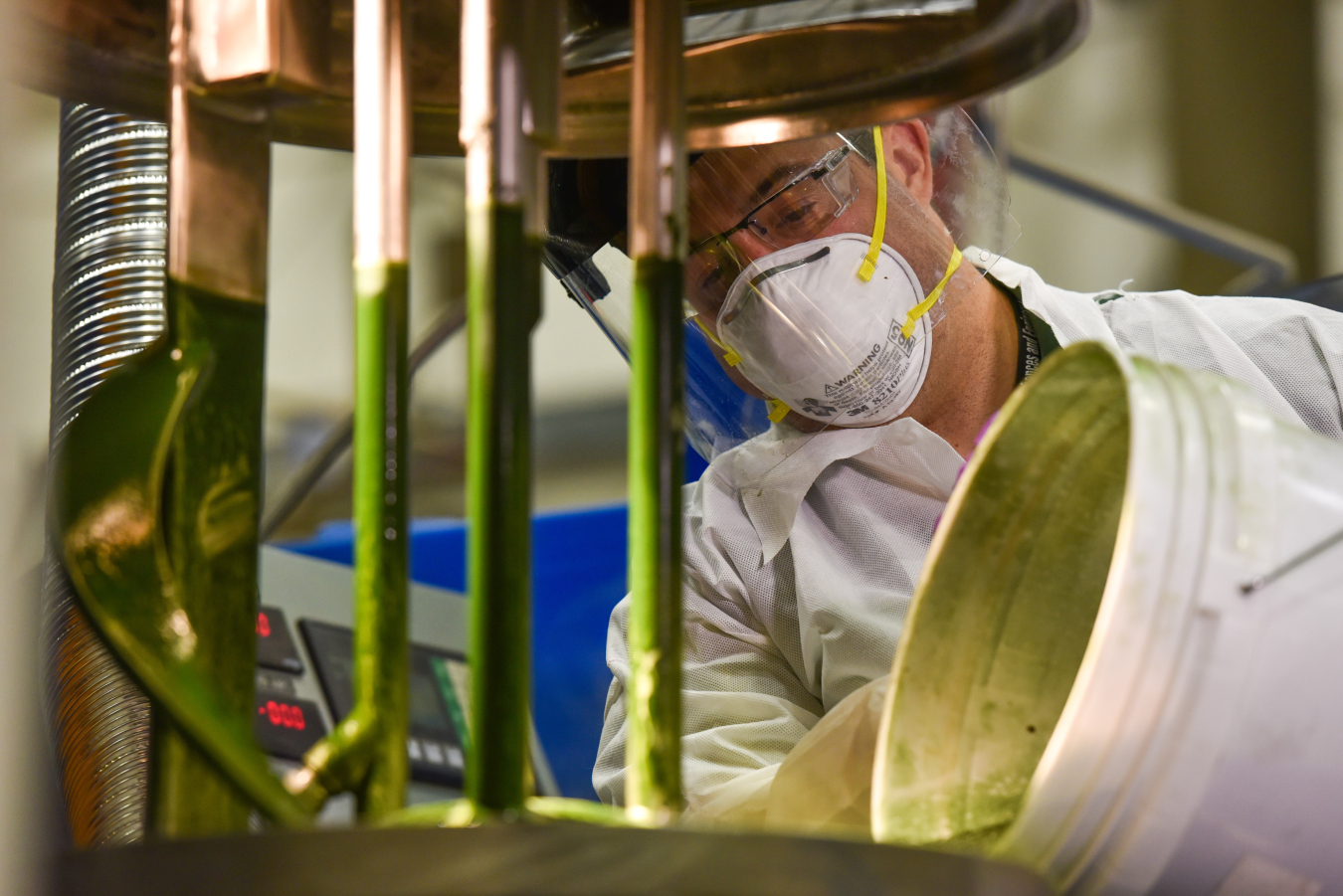Bioprose Blog: Pacific Northwest National Laboratory develops new model for analyzing biocrude yield and economics.
July 10, 2019
Senior Research Chemist in the Energy Processes and Materials Division at Pacific Northwest National Laboratory
BIOPROSE BLOG
PNNL team develops new model for analyzing biocrude yield and economics
Scientists have made significant strides in transforming algae to biocrude using a process called hydrothermal liquefaction, or HTL. Still, the long road from laboratories to fuel tanks harbors a few potholes. Questions remain about just how much biocrude can be extracted—and at what price.

In this study, PNNL used a unique and experimental continuous flow HTL system that is much closer to how the algae conversion process would take place in a commercial setting. Photo credit: PNNL.
Researchers at Pacific Northwest National Laboratory (PNNL) have developed a model that predicts outcomes from the algae HTL process in a way that mirrors commercial reality much more closely than previous analyses. They found that algae with higher lipid content is key to reducing costs, and that two factors—algae composition and capital funding—are the biggest drivers of economic uncertainties about the process.
PNNL’s paper, "Techno-economic uncertainty quantification of algal-derived biocrude via hydrothermal liquefaction," was published in the May 2019 issue of Algal Research. The work was funded by the U.S. Department of Energy’s Office of Efficiency and Renewable Energy’s Bioenergy Technologies Office.
While similar studies on algae HTL yields have been done, they were based on lab benchtop experiments, and those configurations are different from a commercial-scale plant.
A unique and experimental continuous flow HTL system at PNNL offers a setup that is much closer to how the process would take place in a commercial setting. The HTL reactor subjects the algae to high heat and pressure, which produces biocrude, along with liquid, gas, and solid byproducts. The biocrude can then be refined further into transportation fuel.
The researchers’ analysis is the first based on this type of process, which has fundamental differences from lab-scale batch processing and tends to yield a higher percentage of biocrude.
Having approximated an industrial setup, the researchers developed a predictive model to assess the biocrude yield, economics, and uncertainties of the process using four different types of algae — Chlorella sorokiniana DOE 1412, Nannochloropsis oculata CCMP525, Tetraselmis sp. KA33, and Gaulderia sulphuraria.
Lipid content is key to predicting the yield of biocrude production. The analysis found the higher the lipids, the higher the yield of biocrude, which can help lower the price. Yet the biocrude price range that emerged from the simulation was still high: between $5 and $16 per gasoline-gallon equivalent due to the uncertainties in algae production cost.
The price, the researchers found, was largely driven by the cost of the algae feedstock, which accounts for about 90% of the finished product price. The analysis also noted several uncertainties that contribute to the wide variation in price, with algae composition and the amount of capital funding topping the list.
The results suggest that more work can be done to lower the cost of algal biofuels. Future analyses could focus on lower-cost feedstocks, such as wastewater treatment sludge or woody biomass mixed with algae.
PNNL Research Team: Yuan Jiang | Susanne B. Jones | Yunhua Zhu | Lesley Snowden-Swan | Andrew J. Schmidt | Justin M. Billing | Daniel Anderson
Dr. Asanga Padmaperuma

Dr. Asanga Padmaperuma is a Senior Research Chemist in the Energy Processes and Materials Division at Pacific Northwest National Laboratory. He serves as the Laboratory Relationship Manager for the Department of Energy's Bioenergy Technologies Office, which has oversight of research in renewable use of marine, terrestrial, and waste biomass for fuels and chemicals via thermal, biological, and electrocatalytic conversion.
Dr. Padmaperuma also serves as the Technical Leader for the Chemical Conversion team in PNNL's Chemical and Biological Processing Group. Prior to his current assignment, his research focus was on thermochemical, low-temperature catalytic, and electrochemical production of value-added chemicals and fuels from bio-based and waste sources. He also conducted research in design and development of functional molecules for organic electronics and liquid scintillators for radiation detection.
Dr. Padmaperuma completed his B.Sc. in Chemistry at the University of Colombo (Sri Lanka) and obtained his Ph.D. in Organic Polymer Chemistry at the University of Southern California's Loker Hydrocarbon Research Institute. He is a named inventor on several granted patents as well as an author of more than 50 journal articles, book chapters, and public technical reports.
Meet our other bloggers ►
Return to Bioprose blog ►


